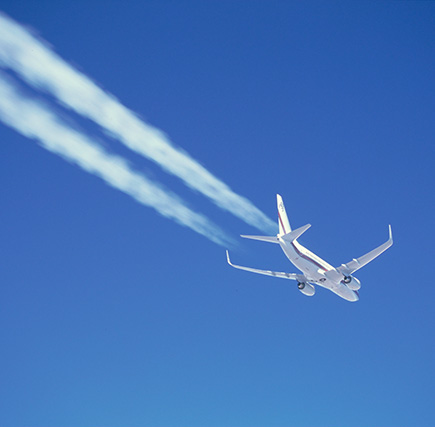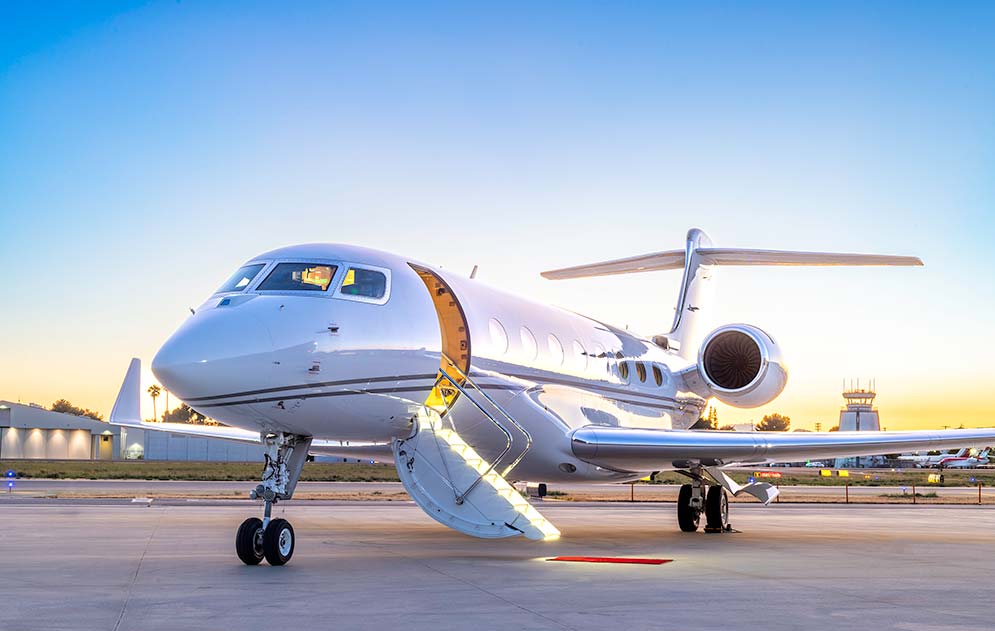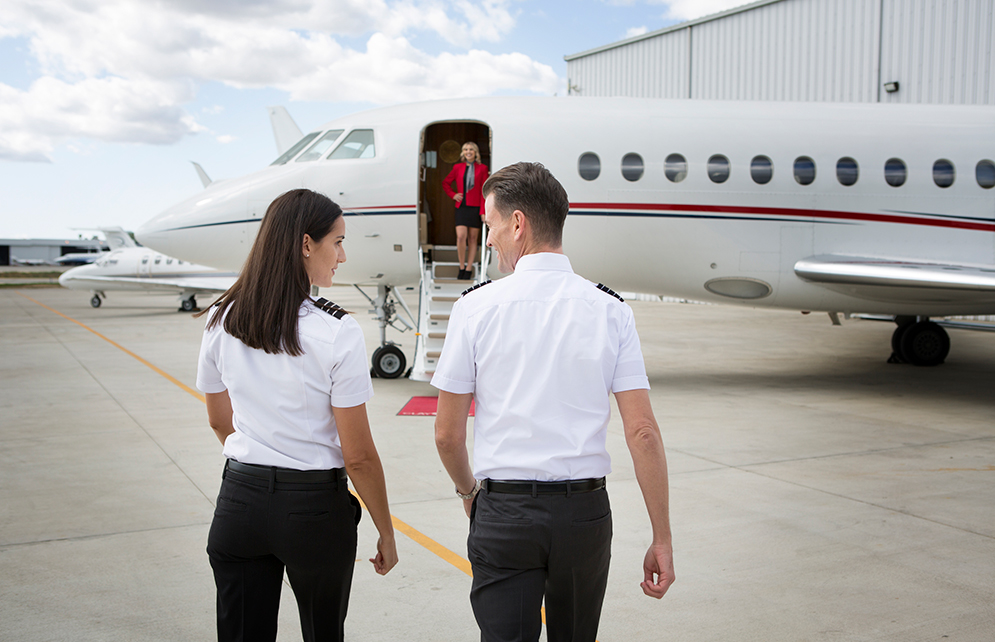
Large-Cabin Business Jets: Now is the Time to Buy
By Clay Lacy in May 2004 Professional Pilot Magazine’s “Purchasing Guide”
ATP/CFII/Helo?Sea. Gulfstream II/III/IV,
Learjet and Citation series,
HS125, Boeing 747, DC3 and
25 misc type ratings.
If you need a large-cabin business jet and can afford one, this is the year to buy. Prices of new and used business jets are at all time lows, interest rates have never been more affordable than they are today and there’s a lot of selection out there. This situation, however, is not likely to last.
According to brokers I’ve spoken to and based on my own experience, the Stage III large-cabin market is already beginning to firm, supplies of better-quality aircraft are lessening and prices for heavier iron may move up a solid 10–15% by next year.
Just a couple of years ago you couldn’t touch a good Gulfstream IV for under $20–24 million. But these days I’ve seen GIVs sell for as low as $14 million and GIVSPs for as little as $17–18 million. One of the newest GVs to be based here at VNY (Van Nuys CA)—an airplane with only 1500 hrs on it—was something of a distress sale and it sold for a price that would have been unheard of a year ago.
An early-serial-number GV, owned by a sultan on the north coast of Borneo, came to my attention recently at an asking price of just $24.5 million. A friend of mine was interested in buying this airplane, although it would have required about $3.5 million of interior work, which would effectively have brought it up to $28-30 million—close to what other GVs have traded for.
All new and used aircraft are down in price this year. In the case of some aircraft types, 15–20% of all units built are up for sale. This puts downward pressure on price and makes the sales process that much longer.
If most of your operations are domestic and you’re not too concerned with noise, large-cabin Stage II aircraft can be a terrific buy these days. A GIII that may have sold for $10 million 2 years ago can be had for $6–7 million. Early GIIs have traded lately for under $3 million, while they would have cost close to $5 million just 2 years ago.
ACCELERATED DEPRECIATION
If you’re looking for a new airplane, and can use the 40% accelerated first-year depreciation that President Bush recently implemented, there are great deals to be had on new large-cabin aircraft. Keep in mind that this depreciation deal is not like the old investment tax credit —you don’t get any more depreciation, you just get it earlier. To take advantage of greater first-year depreciation you have to be an organization that can use it.
What’s happened over the past couple of years has been an about-face in supply and demand. It wasn’t long ago that good Bombardier Challengers, Dassault Falcons and Gulfstreams were a scarce commodity. Historically, residual values of many corporate jets remained as high as 85–90%, even though the aircraft may have been 10–12 years old. During fast economic times manufacturers did little discounting.
But with availability of most aircraft models significantly up, downward pressure has been exerted on the prices of both new and used aircraft. Manufacturers are more than happy to deal these days. If you come around with cash and a real desire to buy, there’s a lot of price flexibility available.
I’ve seen down markets twice before—once in the early 1970s and again in the early 90s. At those times, prices were suppressed for 3–4 years before rebounding strongly. Well, we’ve already been in our current down market 2.5–3.0 years and economic conditions are generally more positive now than they were during the recessionary, high-interest rate downturns of the past.
During the last downturn, a lot of aircraft for sale were in the hands of brokers. They got into trouble and had to start dumping aircraft. You don’t see that phenomenon so much today. Most aircraft for sale today are in the hands of owners who seem willing to do what it takes to protect their investments.
My prediction is that the current buyer’s market, particularly in terms of good-quality large-cabin aircraft, won’t last much longer. In fact, we’ll probably see a return to near historic residual values in 2004.
CHANGE ON THE HORIZON
While business jet manufacturers all seem to have unsold aircraft on their lots, and many will gladly fight over you to sell you an airplane, the situation won’t stay this way forever. Manufacturers ramped up production during the late 1990s, hiring specialized labor and making all sorts of deals with suppliers and subcontractors. After ramping up production it took some time to slow it down again. The process is not like turning on and off a faucet—it happens in slow motion.
When the market rebounds, you can be sure that the discounting that’s going on today will stop. And prices of new aircraft probably won’t be any lower than they were at the height of the recent up market. In fact, prices may even be a little higher because manufacturers have lost some of their efficiencies with recent cutbacks in production. So, if you can afford it, it makes sense to go out today and buy the business aircraft you need.
Over the past few weeks, I’ve sensed the beginning of a slight tightening in the market for quality Stage III large cabin jets. The pre- owned GV supply has dried up from 12–14 airplanes for sale to just 6–8 available at the end of March. What’s happening today is that many midsize jet operators are taking the opportunity to move up to large-cabin jets. As supply shrinks and prices tighten on large-cabin jets, prices will also begin to firm on midsize and then smaller jets.
I anticipate higher prices over the next few months, particularly for popular large-cabin aircraft like the Bombardier Challenger 604 and Global Express, Dassault Falcon 2000 and 900EX and Gulfstream IV/IVSP/VSP.
Airplanes that will continue to take a beating price wise are older Stage II models which lack updated flightdecks. While hushkits are now available for GIIs and GIIIs, there’s some question as to whether the investment is worth it from a cost/ benefit perspective. Many operators are afraid that European airports, many of which already restrict Stage II airplanes, may not automatically exempt hushkit-equipped Stage III equipment.
While I don’t like to see the industry where it is at the moment, with everyone except buyers hurt by falling values for business aircraft, I think part of the solution is to get as many new people into corporate aviation as possible and keeping the resale market moving as well as it can.
DEALS TO CONSIDER
If you’re looking at buying your first business aircraft, or you’ve just come out of a fractional ownership contract and find you can use significantly more flying hours, this is a very good time to go shopping for turbine-powered equipment.
If you operate a midsize jet and are looking to trade up to a large-cabin model, you’ll likely be able to make a good deal. While you might take a $2.5-million loss—compared with what prices were 2 years ago—in selling your Raytheon Hawker 800, you could save $5-6 million on the purchase of a Gulfstream. Your operating costs will go from $1000/hr to $1700/hr, but you’ll be flying a lot more air- craft with considerably more range.
The ideal scenario is to sell your existing aircraft at or above current market value and then buy your new airplane below market. Deals like this are often best left to a buyer’s broker. For a fixed fee or a percentage, a buyer’s broker will look at the universe of available options, and you’ll often save 3 to 5 times the broker fee.
Buy any good used aircraft, give it a new coat of paint, do some avionics upgrades and an interior refurbishment, and you’ll come out way ahead of where you’d have been 1 or 2 years ago. Since there have been no dramatic changes in aircraft appearance or performance since the 1960s, your updated older aircraft will look and perform as well as a new product.
I feel there are a few sleepers in the used large-cabin market in terms of low-cost deals. You can get into a reasonably nice GII these days for about the same $3 million that a used Bombardier Learjet 55 or a new Socata TBM700 would cost you.
If you are looking for a Boeing BBJ or Airbus A319CJ size cabin, but your budget doesn’t quite take you there, consider an executive configured Boeing 727 for about $6.5 million. The annual interest saving of $1.35 million (at 3% per annum) over the $45 million higher price of a BBJ or A319CJ will cover $500,000 of annual maintenance and inspections as well as all operating costs, at about $3500/hr, for some 243 hrs of annual flying.
A Douglas DC9-20 at $3.5-4.0 million, or a newer MD87 at about $18 million, will also give you considerable airborne real estate and capability. While these bigger aircraft are not as easy to hangar, my experience has been that they’re not particularly onerous to maintain and operate.
KEEPING YOUR PERSPECTIVE
All business aircraft are really very good these days. You just have to decide which aircraft you prefer and what best fits your needs.
In the large-cabin arena, Dassault Falcon 2000s and 900EXs are great products, with good power, nice cabins and a much smaller footprint than the alternatives. The 900EX cabin is about the same as a GIVSP. It flies a little further and it requires only about 2/3 the hangar space.
People like the wide-cabin advantage of the Challenger 604 and Global Express. You feel more as if you’re in a comfortable room than in a fuselage tube and these aircraft have the advantage of benefiting from the operating experience of Bombardier’s regional jets.
Many people prefer Gulfstreams because they were out first, they have a proven record and they possess a prestigious image.
Corporate aviation is here to stay and all indications are that airline service will only continue to get worse. With airline cutbacks, increased security delays and non-optimal airline schedules, the corporate aviation benefit is even more dramatic today than it was 5 years ago. In my opinion, this gap will continue to widen.
Investing legend Warren Buffett once said, “If you’re waiting for your company to get bigger before buying a plane, buy one now and you’ll get bigger faster.” I’d say this has never been truer than it is today.
If your company is doing okay but you want to expand and you need to get your people around the country, there has never been a better time to be in the market for a turbine business aircraft. If you buy a large-cabin jet in today’s market, you could be millions of dollars ahead compared to either a year ago or a year from now.
Clay Lacy, founder of Clay Lacy Aviation at VNY (Van Nuys CA), is a highly-experienced pilot who has been performing flightchecks and writing other articles for Professional Pilot since May 1997.
For more information about aircraft ownership and Clay Lacy Aviation’s suite of professional aircraft management services, email or call one of our aircraft experts.
Joseph Barber
jbarber@claylacy.com
805.915.9980
Richard Hodkinson
rhodkinson@claylacy.com
818.398.1030


